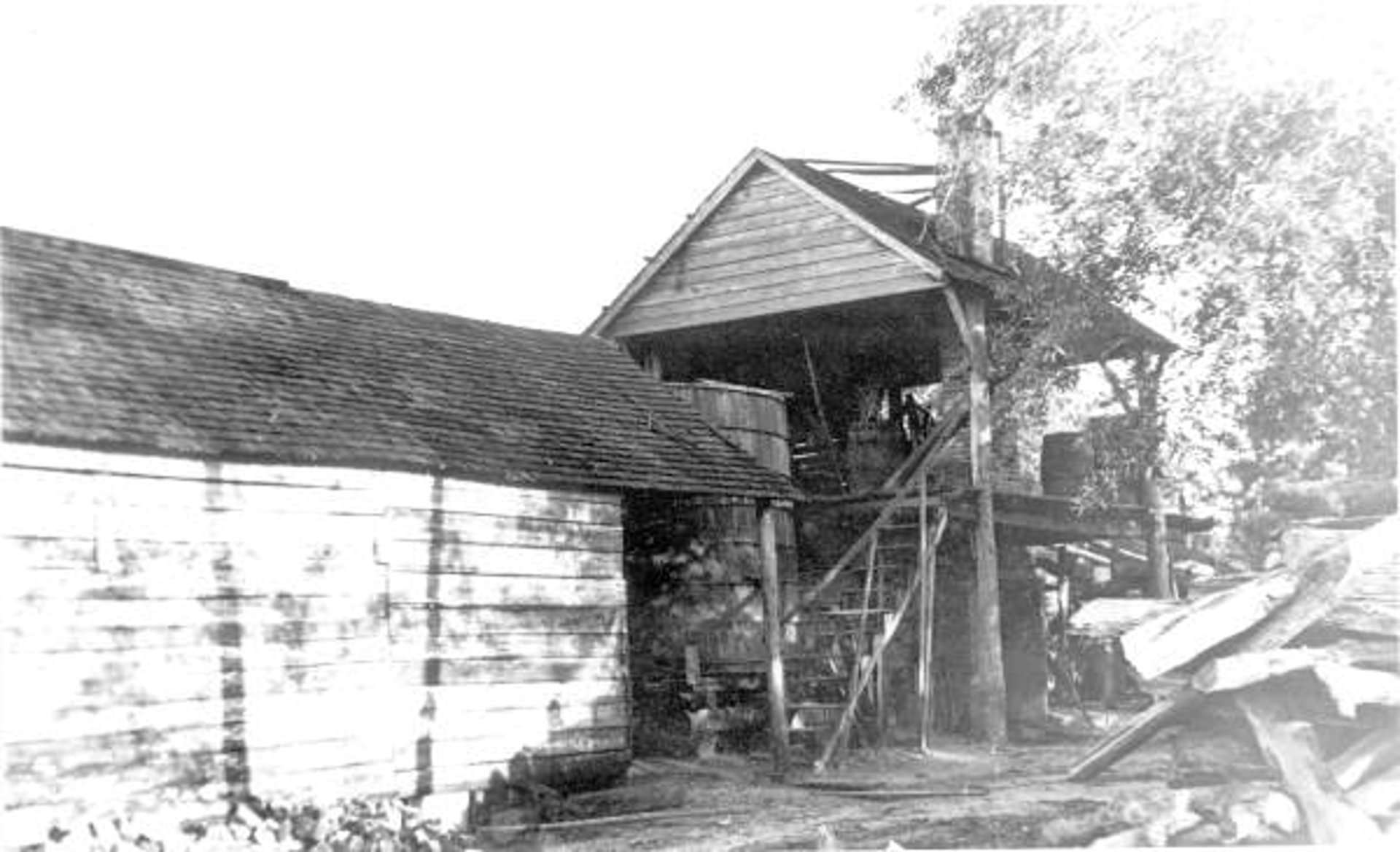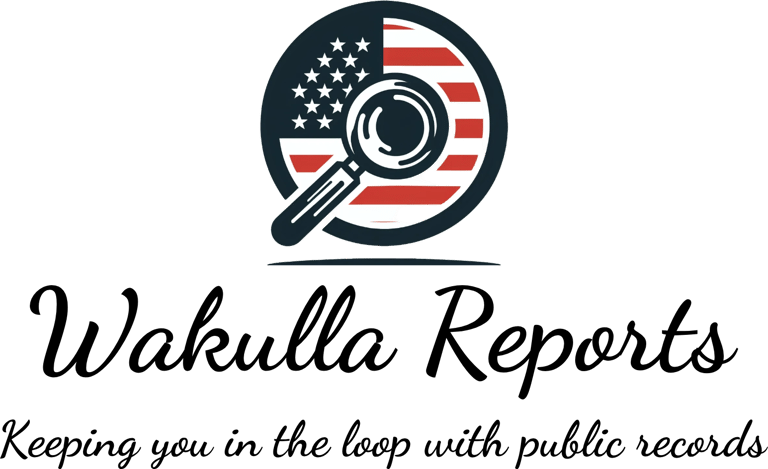The Northeast Wakulla County Sustainable Community: One of Many Betrayals of our Rural Dream?
For those of us who made Wakulla County our home, the promise of open spaces, quiet nights, and a rural lifestyle was sealed in the county’s Comprehensive Plan - or so we thought.
DEVELOPMENT & INFRASTRUCTURE2025
Ida B. Wells
4/28/20257 min read


*Update:05/01/2025 : Wakulla Reports has received and is mining additional information in regard to this article. We will keep you posted and will provide a public update as we craft additional dialogue.
For those of us who made Wakulla County our home, the promise of open spaces, quiet nights, and a rural lifestyle was sealed in the county’s Comprehensive Plan—a commitment to low-density living at 0.1–1 dwelling units per acre (DU/ac). But Policy 1.2.14 in the Future Land Use Element (FLUE) unveils a project that threatens this vision: the Northeast Wakulla County Sustainable Community. This 606-acre development, with 800 residential units and 450,000 square feet of commercial and office space at a density of 1.3 DU/ac, brings urban sprawl to our rural heartland. For residents, including those who bought land before the 2003–2005 ordinances, unaware of these changes while working and raising families, this feels like a breach of trust. Worse, we’re left footing the bill for infrastructure through millions in county debt and taxpayer-funded “grants,” while developers profit. How was this approved, how is it legal, and why do we have no say when big developers threaten lawsuits? Let’s explore the impact and fight for our rural community.
Source: Wakulla County Code of Ordinances, Part III
A Rural Haven Built on Low Density
Wakulla County’s rural charm thrives on its sprawling lots, where homes are acres apart, and zoning typically allows 0.1 to 1 dwelling unit per acre (DU/ac). So, what’s DU/ac? It’s a measure of residential density, showing how many homes—single-family houses or apartments—can fit on one acre of land (43,560 square feet). For example:
0.1 DU/ac: One home per 10 acres, ideal for rural estates.
1 DU/ac: One home per acre, common in low-density rural or suburban areas.
This low-density standard, reinforced by Policy 1.4 capping rural development at 0.05–1 DU/ac, preserves our quiet roads, natural beauty, and rural lifestyle. It’s why we bought our properties, trusting the Comprehensive Plan to protect the open, tranquil life we chose.
An Urban Intrusion at 1.3 DU/ac
The Northeast Wakulla County Sustainable Community defies this rural expectation. Approved through Ordinances 2003-23, 2005-01, and 2005-59, this 606-acre project plans:
650 single-family homes and 150 multi-family units (apartments or townhomes), totaling 800 residences.
350,000 square feet of retail/commercial space (think shopping malls, restaurants) and 100,000 square feet of office space.
With 800 dwelling units on 606 acres, the density is about 1.3 DU/ac—1.3 homes per acre, not counting commercial areas. This is far denser than the 0.1–1 DU/ac standard defining rural Wakulla County, aligning more with suburban or urban areas where homes and businesses crowd together. These urban elements threaten our rural way of life: Never mind the ever displayed ability for developers to amend the comprehensive plan with higher density zoning supported by the BOCC.
Multi-Family Housing: The 150 multi-family units mean apartments or townhomes, bringing higher population density, noise, and a suburban vibe that clashes with our large-lot norm.
Commercial Hubs: The 350,000 square feet of retail—roughly a mid-sized mall—plus 100,000 square feet of offices will create a bustling urban node, replacing fields with stores and office buildings.
Traffic Overload: With 800 homes and commercial space, traffic will surge, especially on SR 363 (Woodville Highway). The policy’s goal of 15% internal vehicular capture (or 10% with pedestrian/bicycle paths) may not prevent congestion on our rural roads.
For those of us expecting the Comprehensive Plan’s 0.1–1 DU/ac zoning county-wide, this 1.3 DU/ac urban project feels like a shock, undermining the rural tranquility we invested in.
A Breach of Trust—Even for Longtime Residents
We bought our properties—some of us before 2005, others after—trusting the Comprehensive Plan to preserve Wakulla’s rural character. Policy 1.2 directs high-density growth to the Urban Service Area, and Policy 1.4 protects rural areas with low-density limits. Yet, the Sustainable Community, carved out as a “Sustainable Community” category (Policy 1.2.13), bypasses these protections for 606 acres.
For those who purchased land before 2005, when the ordinances were passed, this project may feel like a betrayal. Many of us were working long hours, raising families, and managing daily life, with no time to monitor county meetings or obscure ordinance changes. We weren’t aware of Ordinances 2003-23, 2005-01, and 2005-59, and it’s unclear if the county made a genuine effort to notify rural residents. For those who bought after 2005, expecting the Comprehensive Plan’s rural focus, the project feels equally deceptive. This raises a painful question: how could the county approve such a drastic shift without ensuring we, the backbone of Wakulla’s rural community, had a voice?
The policy includes protections to soften the impact:
45% open space secured by conservation easements.
Native vegetation requirements (50% of residential parcels, 35% of non-residential).
Advanced wastewater treatment (AWT) and groundwater monitoring. (Buy you will be forced on sewer with a monthly bill even if your septic tank functions properly)
But these don’t erase the urban reality of 1.3 DU/ac density, apartments, and shopping centers. Open space can’t silence traffic or restore rural solitude.
How Is This Legal, and Why No Recourse?
The approval process and lack of resident recourse spark outrage. Here’s how it happened and why we feel powerless:
Legal Framework: Florida’s Growth Management Act (Chapter 163, Florida Statutes) allows counties to amend their Comprehensive Plan and Future Land Use Map (FLUM) through public hearings, County Commission approval, and state review for large-scale changes. The 2003–2005 ordinances likely followed this process, rezoning the 606 acres. Legally, the county had the authority, provided it met public notice requirements (e.g., newspaper ads, posted signs) and held hearings.
Lack of Awareness: For residents juggling work and family, these notices were easy to miss. If outreach was limited to a small ad or a sign on the property, many of us were left in the dark. Rural communities need direct engagement, which may not have happened effectively in 2003–2005.
Developer Power: Big developers with deep pockets often dominate planning decisions. They can afford legal teams to push ordinances, lobby officials, and secure approvals. The threat of lawsuits—against the county for denying development or residents challenging approvals—silences opposition. If we fight now, developers might claim their property rights were set in 2005, making legal battles costly and daunting.
No Recourse: Reversing 20-year-old ordinances is nearly impossible. Challenging future Planned Unit Development (PUD) approvals or site plans is an option, but overturning past decisions requires proving procedural flaws (e.g., inadequate notice) or new violations—expensive and complex. The county’s concurrency requirements offer some leverage, but developers’ resources often outmatch our ability to fight.
This leaves us feeling voiceless, as big money seems to override community input, and the legal system protects established decisions, abandoning rural residents who trusted the 0.1–1 DU/ac vision.
Who Pays, and Who Profits?
The Sustainable Community’s costs and benefits underscore the injustice, especially since we, the taxpayers, not developers, end up paying for infrastructure:
Infrastructure Costs:
Taxpayers Bear the Burden: Despite Policy 1.2.14 requiring developers to fund major expenses—like a 600,000 gallon/day AWT wastewater facility, stormwater systems, a 40-acre school site, and SR 363 upgrades—Wakulla County’s history shows that taxpayers often foot the bill. The county takes on millions in debt periodically to cover infrastructure, while preaching that “grants” will save us. But grants are still taxpayer dollars, meaning we pay for sewers, roads, and schools, even for developments we didn’t ask for.
County Costs: The county incurs planning expenses (e.g., 2023 SR 363 analysis, Leon County agreement) and may fund schools or services if developer fees fall short. Rural residents could face tax hikes to cover these, despite gaining no benefit from the urban hub.
Developers’ Role: While the policy mandates developer contributions, in practice, these costs are often shifted to the county through loopholes, negotiations, or non existent impact fees, leaving us holding the bag.
Profits:
Developers profit massively from selling 800 homes and leasing/selling 450,000 square feet of commercial/office space. The land’s value soared after 2003–2005 rezoning, boosting their returns.
The County gains long-term tax revenue, but rural residents see little direct benefit, stuck with higher taxes and a disrupted lifestyle.
Your BOCC is getting started with this project in the Northeast Corridor at your expense: https://wakullareports.com/uncovering-the-decision-makers-the-economic-development-council-and-project-safety-and-project-boomer
The math is infuriating: we’re saddled with debt and taxes for infrastructure, while developers and urban interests reap the rewards.
How Can We Fight Back?
We’re not powerless. Here’s how we can protect our rural legacy and demand fairness:
Unite as a Community: Form a rural residents’ coalition to amplify our voices. Attend public hearings for PUD approvals or FLUM changes, demanding buffers (e.g., wider green spaces) to shield rural areas from the 1.3 DU/ac urban sprawl.
Demand Transparency: Push the county to release nitrate studies, groundwater monitoring results, and SR 363 traffic analyses. Ask how the 2003–2005 ordinances were publicized and whether rural residents were truly informed.
Strengthen Rural Protections: Advocate for a Comprehensive Plan update that limits high-density exceptions and prioritizes rural voices. Insist on stricter FLUM amendment processes to prevent future blindsides.
Hold the County Accountable: Demand robust developer impact fees to cover all infrastructure costs, sparing taxpayers. Verify that SR 363 improvements and other expenses don’t fall on us, and reject the “grants” excuse—those are our tax dollars. Ensure concurrency is enforced to block development if infrastructure lags.
Explore Legal Options: Consult a community lawyer to investigate whether the 2003–2005 ordinances had procedural flaws (e.g., inadequate notice). Collective action could uncover grounds for review or influence future approvals, despite developers’ lawsuit threats.
Defending Wakulla’s Rural Soul
The Northeast Wakulla County Sustainable Community, with its 800 residential units at 1.3 DU/ac and 450,000 square feet of urban development, threatens the 0.1–1 DU/ac rural vision we trusted. For those who bought land before 2005, busy with work and family, the lack of awareness about these ordinances cuts deep. The legal process may have been followed, but it feels rigged when developers shift infrastructure costs to us—piling on millions in debt while we’re told “grants” will save us. Grants are our tax dollars, and we’re still paying. Big money silences us with lawsuit threats, leaving us with little recourse to protect the rural life we love.
But we can fight back. By uniting, demanding accountability, and advocating for our rural legacy, we can push against urbanization and keep Wakulla County the low-density haven we chose. Let’s stand for the open lots, starry nights, and rural charm that define our home.

Additional Social Links
YouTube is your go-to for short clips, video explainers, and visual breakdowns of how Florida and Wakulla governments really work.
Facebook brings you bite-sized written content, sticky-note facts, and rolling updates you can share and discuss.
Prefer to browse at your own pace?
Bookmark our website and visit anytime for fresh posts, resources, and real-life examples from right here in Wakulla County.
© 2024. All rights reserved.
